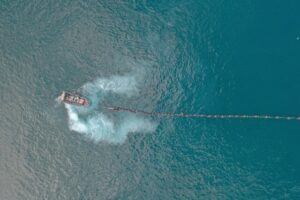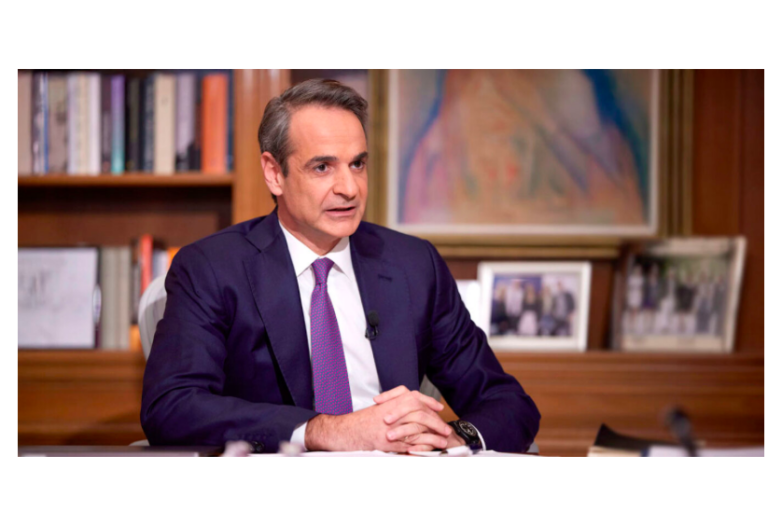With his signature style that makes you say, “This is Rokos,” the artist creates worlds filled with color, atmosphere, and emotion. Now, he returns with his new exhibition “50,000,000 Tons of Landscapes” at Zoumboulakis Gallery from March 20. This artistic proposal explores the volume, weight, and power of landscapes, featuring mixed-media works on canvas or paper, three sculptures, and an animation created in collaboration with two unexpected partners.
“I Chose the Number 50,000,000 at Random to Highlight Our Awe of Life’s Mystery”
GALA: Your new exhibition for 2025 teases the question: “At what moment does a human become part of the landscape?” Can you tell us more about this new work?
STEFANOS ROKOS: This beautiful question was posed by Maria Papadima, a professor at the National and Kapodistrian University of Athens and translator, in her text for the book accompanying the exhibition (Steréoma Editions, 2025). The answers that inspired this question can be found in my new works.
For the first time in my life, I am painting so many mountains, forests, plains, cliffs, and waterfalls. Wanting to depict the immense, immeasurable volume of landscapes, I titled the exhibition “50,000,000 Tons of Landscapes.” The word “tons” refers strictly to the unit of mass measurement. Thus, its use is a naïve and incorrect way of defining the volume, extent, weight, grandeur, and power of landscapes—especially compared to human stories, which seem insignificant next to a vast mountain or a roaring waterfall.
I chose the number 50,000,000 randomly to emphasize the awe that humans feel before the inexplicable grandeur of nature, life, and the universe.
“The Arts Exist to Converse, Combine, and Unite”
G.: Your work appears on album covers, books, theater posters, and more. What draws you to this dialogue between the arts—whether it’s the music of Pavlos Pavlidis and Nick Cave or the poetry of Anise Koltz and Danae Sioziou?
S.R.: The arts exist to converse, combine, and unite. An artist who wants to express themselves through another art form, beyond the one that has defined them, will find ways to do so. Personally, even though I am neither a poet nor a musician, I try to understand Danae’s poetry through my drawings and Pavlos’s music through my paintings.
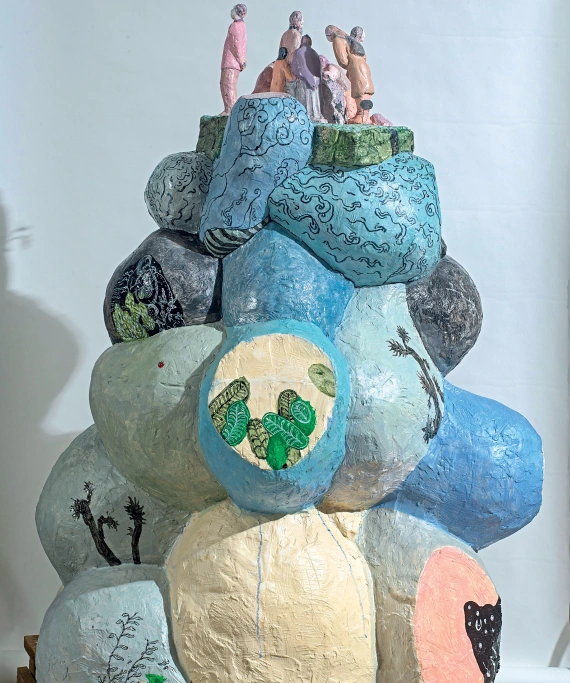
Or I create an image inspired by an art form I am unfamiliar with—and why not, if I have the ability, to touch it in my own way? That’s why, although I am not a sculptor, I will be exhibiting three sculptures for the first time. I love sculpture, and this year, I needed it.
“My Trip to Japan Inspired Me in Many Ways”
G.: Years ago, a trip to Japan filled you with ideas that turned into paintings for your exhibition “The Two Temples.” I visited Japan myself last year and can now better understand what you captured. Does it still enchant you?
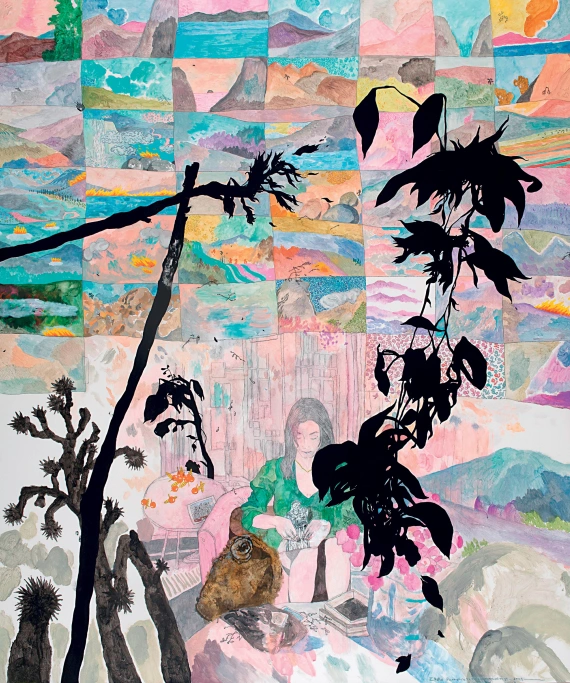
S.R.: My trip to Japan inspired me for many different reasons, but mainly because of the coexistence of the two temples I encountered at that moment under specific conditions—creating both wonderful and challenging memories. Of course, I would love to return one day with a fresh perspective, ready to experience the country differently.
“Inspiration Usually Adapts to My Schedule”
G.: What is your daily routine? Do you have a structured schedule, or do you work freely?
S.R.: For at least 15 years, I have followed a consistent work schedule, going to my studio early in the morning and working until about 6 p.m., with a lunch break. I like routine—it helps me stay focused and productive. Inspiration usually adapts to my schedule.
“AI Still Gives Me Mixed Feelings”
G.: A couple of years ago, you commented on Artificial Intelligence. Has anything changed since then?
S.R.: AI still gives me mixed feelings. I compare it to the uncertainty surrounding the Internet about 25 years ago. Many significant changes are coming, but the most awkward period is the one we are in now, as we don’t yet know the full outcomes. However, this might also be the most fascinating period.
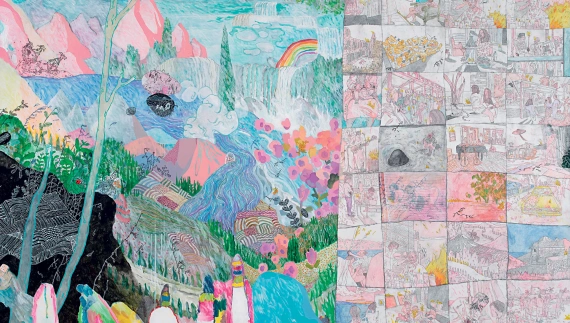
The three main concerns I have about AI in the arts are:
- Intellectual property rights.
- The human factor—people have not yet fully grasped this new tool.
- The risk of losing the creative journey in favor of impressive results.
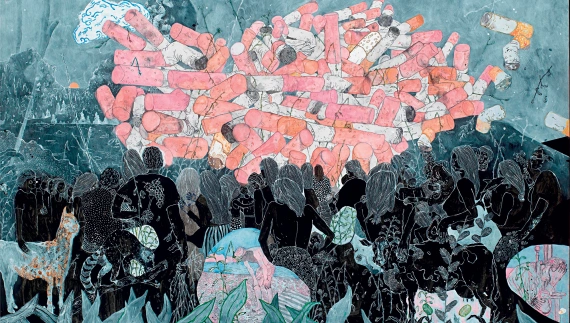
At this point, I find AI applications in the arts rather dull, though initially, I saw them as quite entertaining. Despite technological advancements, I remain a strong advocate of human creation. I recall a scene from a sci-fi film that reassured me: in a dystopian future, inside a hyper-futuristic building, an authentic Guernica was displayed in an office.
But everything I’ve said so far might stem from my lack of understanding of AI’s true impact on our lives.
“My Friends from the Bad Seeds Composed Original Music for the Animation”
G.: You have an incredible connection to music. If your new exhibition had a soundtrack, which three songs would be on it?
S.R.: Given the theme of the exhibition, I would choose:
- “Mountain Song” by Jane’s Addiction
- “A Tree on Fire from Within” by Jack White
- “Oceans” by Beth Gibbons
However, there is an exciting and deeply personal surprise related to my connection with music and the artists who inspire me: my dear friends from the Bad Seeds, Jim Sclavunos and Nick Cave. Sclavunos composed an original score for the six-minute animation I created with the help of Fokion Xenos on which Cave played piano.
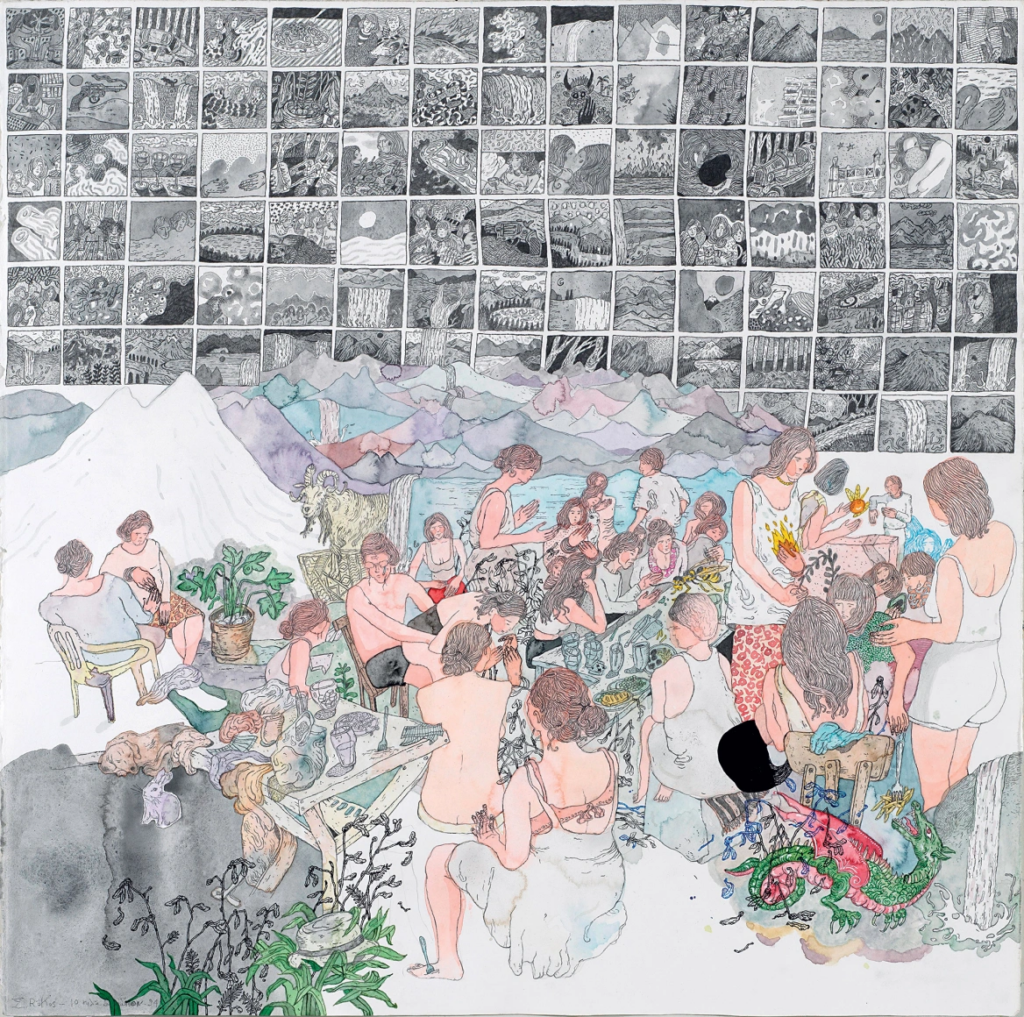
Their composition is titled “Landscape”, and I feel incredibly moved to have collaborated once again with these two exceptional musicians and people. I can’t wait to share both the animation and the soundtrack with as many people as possible who might be interested.
INFO
Stefanos Rokos’ exhibition “50,000,000 Tons of Landscapes” at Zoumboulakis Gallery will run from March 20 to April 17.
More information: zoumboulakisgallery.gr
Ask me anything
Explore related questions

